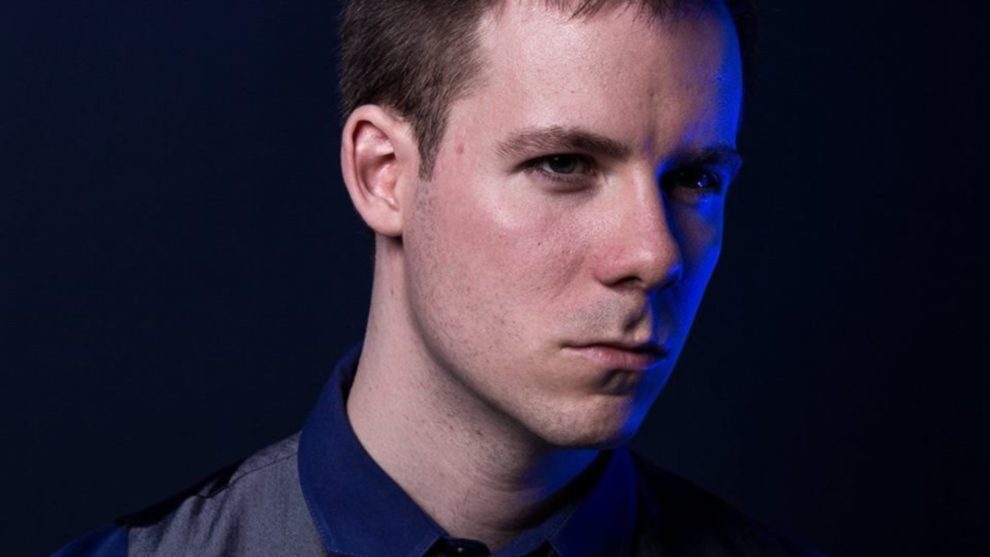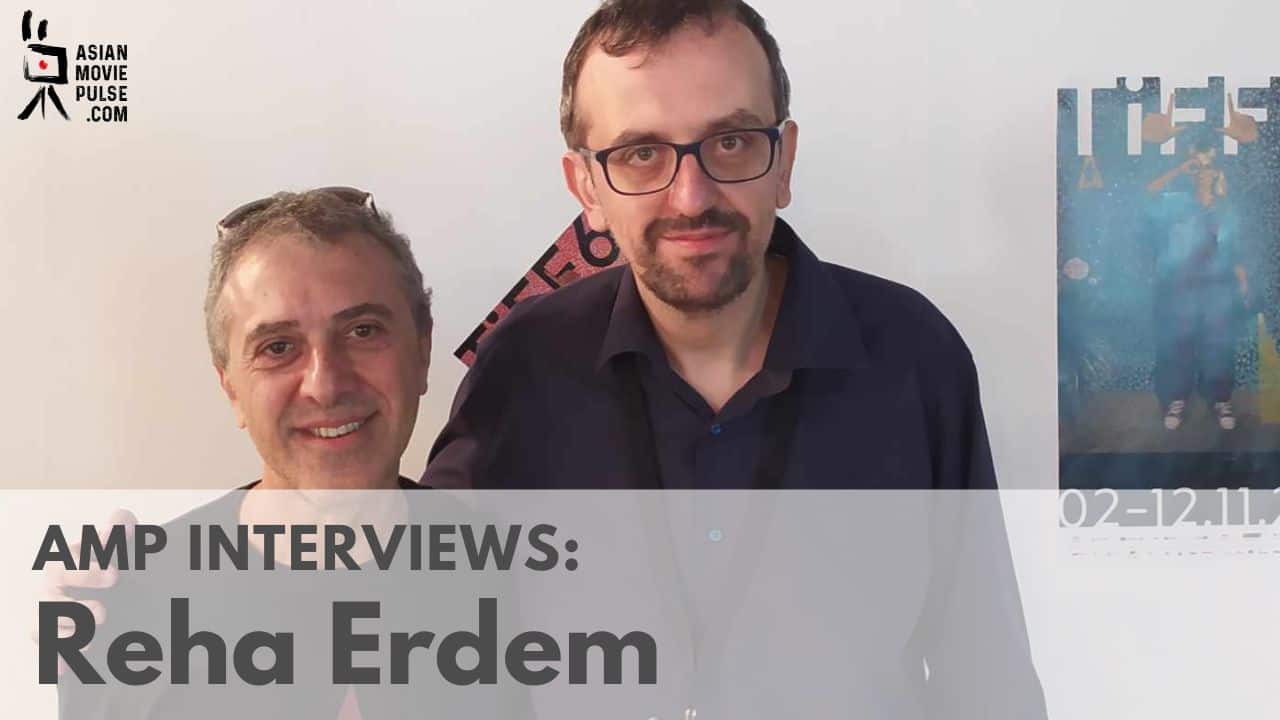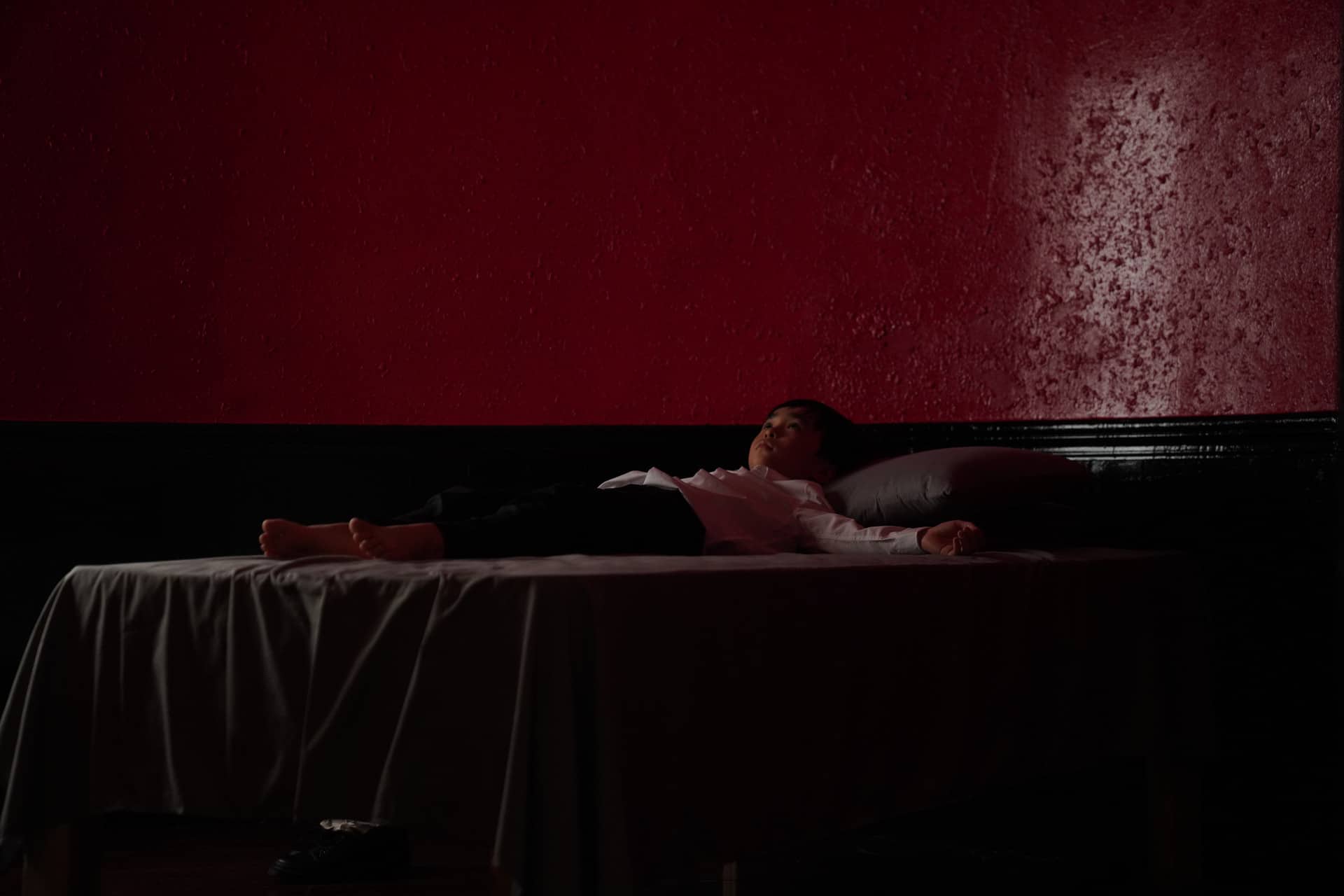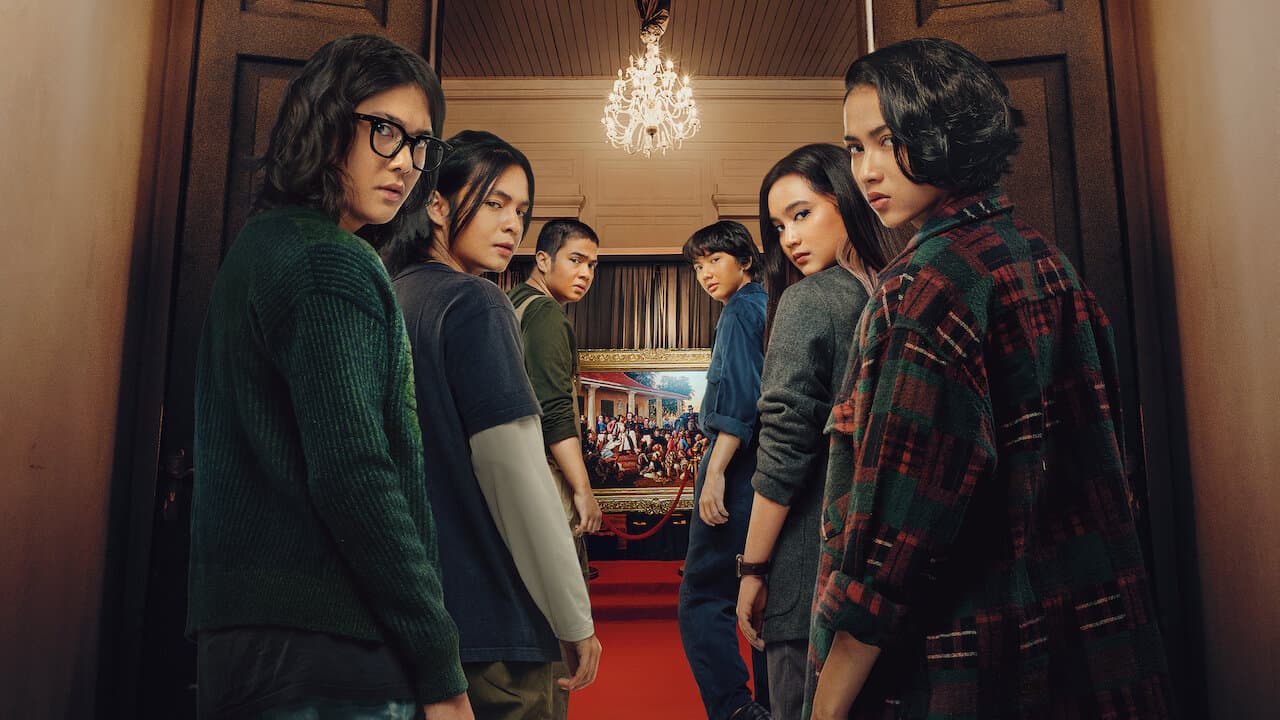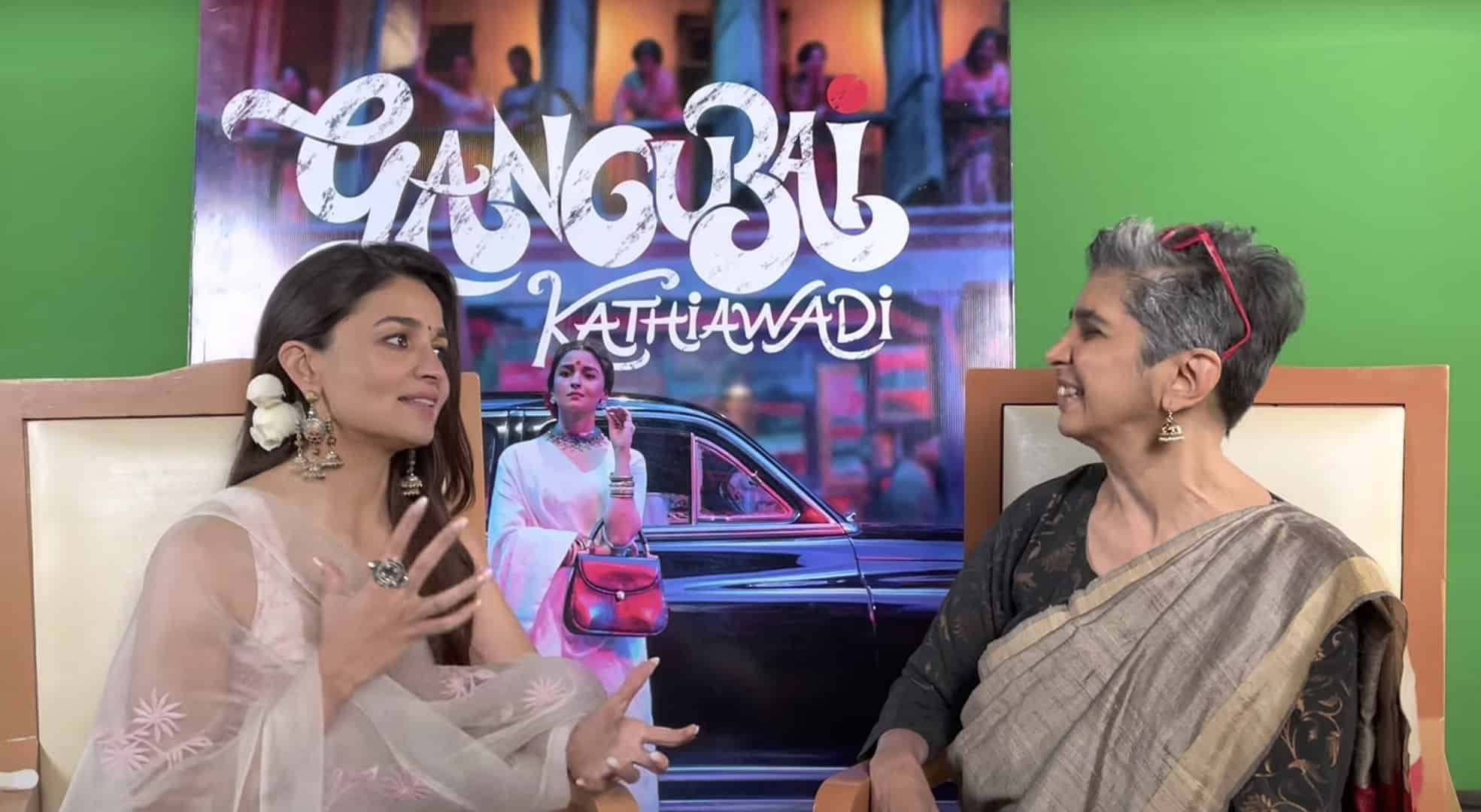Philippe McKie was born in Montreal, Canada. He graduated with distinction from the Mel Hoppenheim School of Cinema
and moved to Tokyo in late 2010, only a few months before the great earthquake of 2011. While living in Japan, he has been steadily working towards establishing himself as a filmmaker, making a variety of short films, culminating in 2018 with “Breaker” and “Be My First” that collectively played in over a hundred film festivals and won over 70 awards. He also worked as a DJ and event organizer, playing in many of Tokyo's most famous clubs, including WOMB and Ageha. He also has experience working as a ‘fixer' in Japan, doing everything from casting, location scouting, gear rental and booking crew for productions from around the world, including work for Apple, CNN, BBC, WWE, Channel-4 and more. “Dreams on Fire” is his feature film debut, for which he was also the writer, editor and art-director.
On the occasion of “Dreams on Fire” screening at Fantasia International Film Festival, we speak with him about living in Japan, the various subcultures there, Bambi Naka and Akaji Maro, the production of the film, eroticism, cyber homeless and net refugees and many other topics
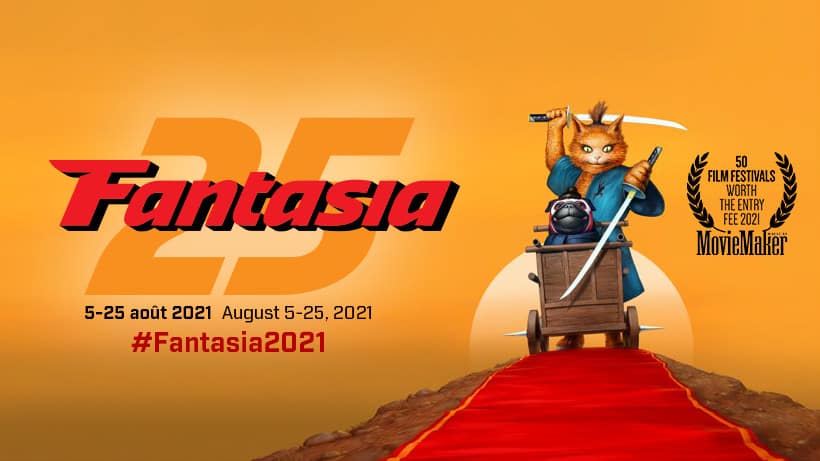
How did you end up living in Japan?
I am originally from Quebec, Canada, born and raised. From a very young age, when I was in elementary school actually, I started getting exposed to those crazy Japanese anime and manga, with the first and most significant one being “Evangelion”. I was able to attend Fantasia as a kid in the second edition, in 1997, where I watched “The End of Evangelion” on the big screen, which was a really intense movie for my age and an incredible experience overall. So, starting at a young age, seeing all these crazy things coming out of Japan, I became rather curious about this unique kind of art, and that planted the seed in me. By the time I got to high school, I was genuinely interested in Japan, and I was able to work a series of part time jobs and go there for the first time when I was 19. However, when I first got to Japan, I realized that it was quite different from what I had imagined. Therefore, I decided to leave all my preconceptions behind and start from scratch. Then I went to film school in Montreal, and when I turned up 20, I went by myself to Tokyo, which I have been based in since then, for about 11 years now.
From the very beginning of arriving in Japan, I knew I wanted to be a filmmaker, but I did not know anything about the Japanese movie industry at the time. I certainly did not know how much of a challenge it would prove to pursue filmmaking there, but my goal was always to make movies there. Finally, “Dreams on Fire” is my feature debut in Japan, after having worked and shot short films there for ten years.
Of the people I know living in Japan, what they tell me is that you can live for years and adapt there, but you are never really “one of them”. Is this your feeling too?
Here is the thing. There is one of them and “one of them”. I am not Japanese and that is ok. If I wanted people to look at me and think that I am Japanese, that would be tricky (laughs). However, I do believe that you can be embraced and accepted in Japan. If you can find a community of people that share the same interests as you, they could actually consider it cool that you are coming from abroad. You may have to prove yourself though, you may have to show that it is more than a hobby, if you really want to become one of them. However, I know many foreigners that are really deep in subculture communities and are definitely “part of the squad”. They are not considered Japanese, because they are not, but they are members of the community.

Can you give me some more details about how the production of “Dreams on Fire” came to be?
“Dreams on Fire” is 100% independently produced. Over the years in Japan, I did a number of my personal projects, short films, with my last two titled “Breaker” and “Be my First”, both of which screened in Fantasia in 2017. Through these two short films, I was able to gain confidence as a filmmaker, polish my own skills and find my style and also, to meet people in Japan, talented artists that worked in cinema. Therefore, by the time I decided to shoot “Dreams on Fire”, I knew a lot of really talented filmmakers in Tokyo and I was able to build this dream team of other artists. Actually, in terms of crew, we were all foreigners. DP is from the UK, the sound recorder is from Guam, our first AC is from Australia; we were like a gang of pirates from different countries (laughter). I did not have a production manager or a trained AD, I had to wear a lot of those hats myself, but I was actually very comfortable in doing all these things, after what I had previously done in Japan. I also worked as a fixer in Tokyo for a couple of years, and that gave me the experience of booking locations, casting, everything from A to Z regarding production in Tokyo. Therefore, I was able to do the production my way, with no one over my shoulder; every decision was essentially mine.
Since you mentioned casting, can you give me some more details about that aspect, and particularly about Bambi Naka?
“Dreams on Fire” was Bambi Naka's debut in a leading role, which I consider a huge honour for me. I was a fan of Bambi for years. She had blown up in Japan as a dancer , because she participated in Madonna's world tour, as one of her background dancers. So, every dancer in Japan knows Bambi. Before making “Dreams on Fire”, she was at this turning point of her career, where she wanted to go from dancing to other art forms, like modelling or acting. Clearly, as you can see in the film, she has so much talent for acting, which I hope more people will realize through this movie. It was a dream come true working with her, and also, it was really important for me, that all dancers in the film were played by real, top-tier dancers. The casting of “Dreams on Fire” is a mix. First, finding the absolute best dancers in their field, for example, of house, of freestyle battle dancing of the best choreographer for large numbers. Then, in terms of the actors, we have a couple of legendary individuals, like Akaji Maro and Masahiro Takashima, who plays the hostess bar host. Lastly there are also a number of famous artists that appear for the first time in a film, like Saki Okuda, who is a famous AV actress, Haruka Kurebayashi, who is a famous Harajuku model and many others. I am really glad I managed to include all these great artists.
The scene where Akaji Maro, a famous Butoh dancer himself, forbids his granddaughter (in the film) to become a dancer was rather funny, on a meta level. How did you come up with this idea?
It is indeed ironic, but not fully. For example, if you know who Akaji Maru is, then it is ironic. If you don't, which I feel is the case with the movie's target audience, who are in essence the youths that mostly comprise the dance community in Japan, then you would not perceive it as such. Furthemore, I feel that Akaji Maru has two modes; the human actor mode and then a second, which I can only describe as a Butoh manifestation, and in films, we get one or the other. However, in “Dreams on Fire”, I wanted to show both sides of his artistry, so we have him both as the grandfather and as the form he takes later, which I will not reveal here.
There are a plethora of characters and events in the film. Are they all based on your own experiences?
Absolutely. I'd say every single person that appears in the film is either a reflection of an aspect of my life in Japan or based on the people I have met in Tokyo. For example, that scene where the hostess talks to the snake in the heavy metal bar, and teaches the protagonists tricks, these are tricks I have learned from professional hostesses.
Since you mentioned professional hostesses, can you tell me a bit more about their world? For example, who are the people working there?
The whole concept is uniquely Japanese, we definitely do not have that in Canada (laughs). In Japan, you have these two main elements coming together. On the one hand, if there is an audience for something, a potential market for something, someone is going to start a business for it. Whether it is food or anything having to do with social interaction. People hear about these cuddling cafes, and they think that Japan is so freaky, that everyone is going to these types of cafes. This is not the case, however, there is a minuscule amount of people that actually go to these places, just enough to maintain that the business keeps running.
The other element is that I find that eroticism in Japan is accepted as a part of the human condition. In my experience, with western culture, oftentimes I find that sexuality is quite taboo. Even though, nowadays, we are not that religious as in the past, the remnants are still part of the culture, whether we like it or not. But in Japan, eroticism and sexuality are parts of life, so you are going to be seeing it all over the place. You are going to see it in mangas that are aimed at children for example. Therefore, you have business that cater to level one to level ten. In level three, you will have the hosts and hostesses industry and on the higher level, you will have legal prostitution, in all shapes and forms. Hosts and hostesses, which is actually an industry that also caters to women, and not only heterosexuals.
Let us say that the two of us go to a hostess bar in Tokyo. We would both enter and they would pair us with two girls, who would sit next to us, talk to us, and in general try to make us have a good time. We would pay by the hour and we would also buy them drinks. However, there is no promise for any physical contact between us and the girls. It is 100% their call. If you were to touch one of the girls, she would probably say something to you like, “get your hands off me” and there would probably be a member of the staff watching. So, to answer your question about who is working there, I have to say it is a really popular type of job for young adults for example, because they earn around $30 per an hour, to drink and have fun with customers. On paper, that is a fun, part-time job, particularly since it pays about three times more than a minimum wage, part time job. I know a lot of people who have done that type of work, and some of them are actually members of the cast.

Actually, I was asking because in the film, one of the hostesses is revealed to be an AV actress. Is that common?
What is interesting is that this happens in the film, and she is actually a famous AV actress, Saki Okuda, but she also does theater, she even directs theater. She has this side where she really loves the craft of acting and that is why I approached her for that role. I would say that doing both these types of work is not common, because it would be found out and influence her work as a hostess. The funny thing, however, is that there is this new place in Shibuya, which is essentially an AV amusement park, everyone working there is an AV actress. There are games you can play with them or you can talk to them through a glass; it is normalized in a way.
Can you tell a bit more about this underground scene in Japan? Is it as vibrant as presented in the movie?
I am glad that the film gave you that impression, because it really is. What is really interesting, is that if you are not in that community, you won't see it. There are these subcultures that exist in Tokyo and Japan in general, but unless you know where to look, you will not necessarily see them, but, somewhere below your feet, there may be something great happening. In Japan, there are more than 6 million people that are enrolled in dance classes and dance studios. On the global stage, Japanese dancers are winning top competitions. If you remember, the first dance battle scene in the movie starts with a footwork battle between a guy and girl, Kino and Kazane. Just a few days before we shot that scene, she was in France, competing in one of the top house events in the world, while in the year before, she won the competition for best house dancer in Japan, a crazy, yearly long competition involving all the talents in the country. All that to say, it is a huge, huge world. And I hope that with “Dreams on Fire”, I can show a taste of the many different worlds that exist.
And what about those S&M, fetish events that are presented in the movie?
There are a couple in the film (laughs). One of them is a fetish event, and that is definitely a thing in Tokyo. Some of them are monthly, some are weekly, there are places that are open every day of the week. In these events, you also have different tiers. My favorite is one called “Department H”, which takes place the first Saturday of every month. That is one that anyone can go to. You can go in like you and me are dressed now and you will enter into the true feitsh world. You will see such a range of people there; there are some that are literally naked, people who are in extremely beautiful, custom-made outfits, you will have cosplayers, people on stage performing. And then you have other places, where there are strict dress codes and rules. Towards the end of the film, where the protagonist starts working in that S&M performance bar, that is a real place in Tokyo. The girls in that scene are all girls that actually work there.
And was Bambi comfortable with all these scenes?
Absolutely. Bambi has a strong personality, in a good way. She is super kind and super generous, but she is not going to do anything she does not want to do. She had the full script from the beginning, which she loved and there was only one time when I suggested to her a particular dress to wear in a hostess club scene and she told me that she did not feel that one. When I suggested a school girl uniform, however, she considered that a classic, and she agreed immediately.
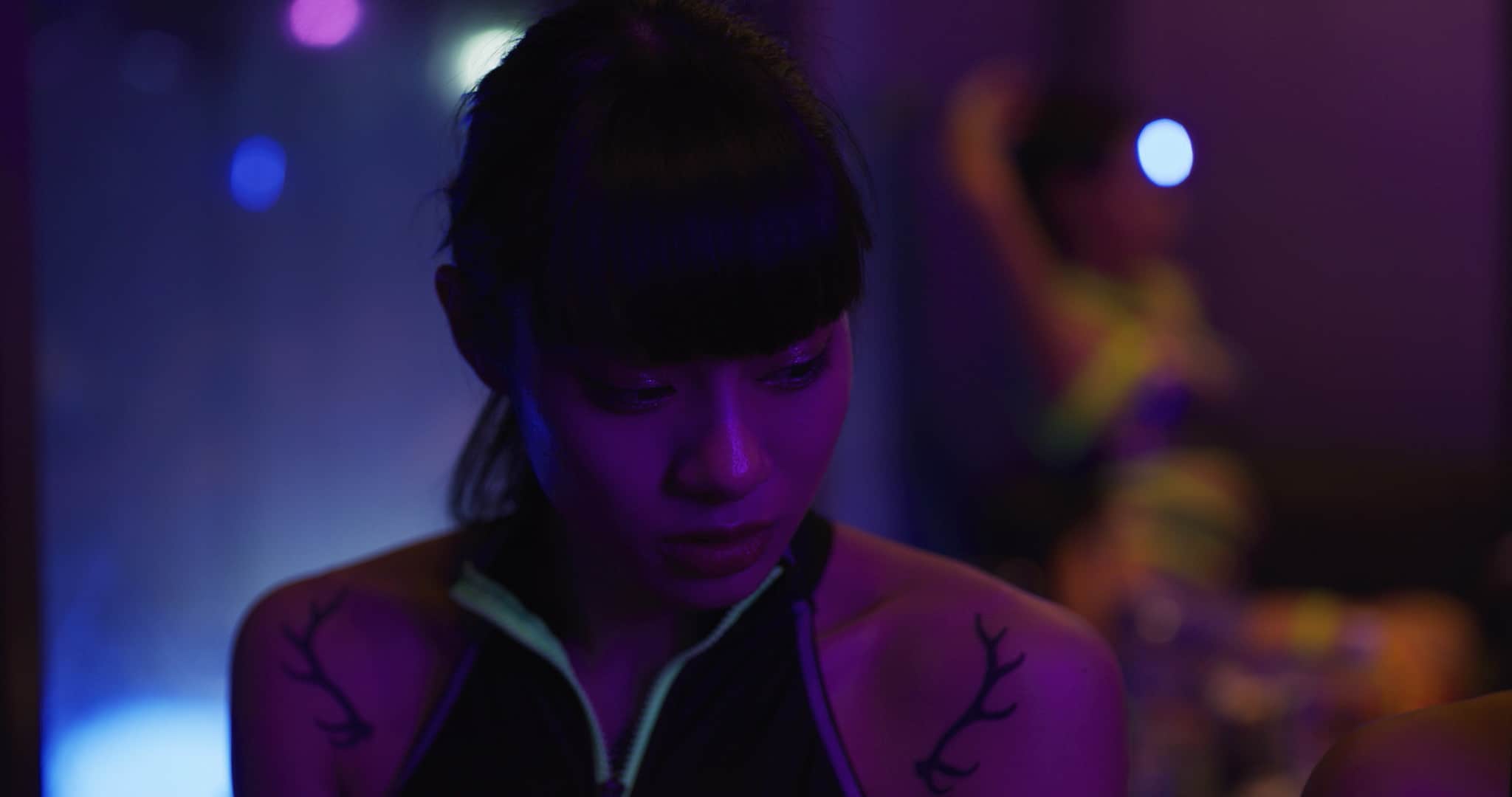
The film shows that in order to get a job in show business nowadays, one needs to have a significant amount of followers, something that is considered a prerequisite. Is that an actual thing in Japan?
Not only is it a real thing, but this part of the movie is actually a comment on the current state of the Japanese film Industry. For many years now, if you are looking at the big studio films, who is being cast is 100% based on social media. Oftentimes, it is not people with backgrounds as actors, but idols, singers, models. I understand it from a producer standpoint, but I also think it is hurting Japanese cinema, from being exported to other countries. Because even next door countries do not know who these idols are. All they see is subpar acting. In terms of how I want to cast my films, my rule is that I want the best person for the role.
To expand a bit more about filmmaking in Japan, for Japanese filmmakers, there are certain things that are normal and standard, which oftentimes, I find super outdated and are harming the quality of the film. In my case, I do not care how films are being made in Japan, and I do not care how films are being made in Canada. I am just going to make films my way. “Dreams on Fire” is the perfect example. From A to Z, my rules. As I continue to grow and make films in Japan, hopefully, of course I would like to cooperate with producers and of course I would like them to love the way my films are being made, but I am definitely going to be doing things a bit differently than how they are being done now.
Can you give me some more details about the choreography of the film?
Each of these dancers is the top in their field. Therefore, telling them how to do the choreographies made no sense. So, I would decide the music, or sometimes, if it was a solo, I would give them a few options or I would just tell them which track they would be dancing to and then, I would tell them the specific time of the track that they would dance in. This would happen months before the shoot, so they would come and they would know exactly what they were dancing to and they would already be ready. Some of them are so badass that they would do something fresh every single time, because they are on that level, while others would prepare something beforehand. Some of the larger choreographies, like the one in the end where there are 50 dancers on stage, was me going to big events of the best choreographers in Japan and handpicking my favorite ones. These shows sometimes would last the whole day, 8 hours of crew after crew, and I would literally circle some names. It was like I was doing a secret casting/audition.
They didn't know?
They didn't. All they knew was that after the show, some strange Canadian would come to them and speak to them in Japanese about his crazy movie.
Can you tell me a bit about your approach in the cinematography of the movie? The initial scene, the one where Bambi is dancing by herself on stage and the ones in the various clubs especially, are particularly impressive.
Thank you for saying so. The DP of the film, James Latimer, is a good friend and collaborator of mine, and he is actually a fellow director, and what is interesting is that this is his first and apparently last work as a DP (laughter). He told me, “Dude, there is no way I am ever going to shoot something cooler than “Dreams on Fire” , so I am retiring as DP” (laughter) We have certain common tastes, but our skill sets are different but match each other. In all my projects, I have been really hands-on with the cinematography; I would come in knowing exactly how I wanted the movie to look. James would come and would give this really awesome advice about how we should shoot it, especially regarding technical terms, like the type of camera, the coloring, while having technology I had never seen before. For example, he would use different lights that he would program using his phone, so we could pick the colors and how the lights would move and strobe in his apartment, and then during shooting, he would say something like “Activate!” and the whole thing would come to life
I was also the main camera operator of the film, so I was very hands-on with the cinematography. To give you an example, I once heard Christopher Doyle saying that camera work is a dance between the operator and the actors, and I agree completely. In this film, it was even more so because there were certain scenes where I was on stage, dancing with the camera, with the dancers. For example, the scene you mentioned, with Bambi's big solo performance, it was me and her on stage, and it was like both of us were doing our solo together. It was so intense, that she was only able to do it a couple of times, because it is such an intense solo. By the end, you can see her sweating and gasping for air; that's real. And I was too.
As for the opening of the film, it has an interesting story to it. Back when I was a teenager, I was very much into dancing myself, mostly tango and break dance, and I would go and see as many dances as possible in Montreal. One show I attended was called “Dancing in Japan”. And I went in thinking that it was going to be something traditional, but actually, it was crazy contemporary, next-level choreographies and it started with the same choreography, as the initial one in the film. It blew my mind. It is a piece called “Shoku” by a group named Batik and I never forgot about it. So, all these years later, I went and found them, and the director and choreographer of the piece, and I told her that I saw their performance all these years ago in Montreal and it changed my life, and that I would love to open the film with her piece,and I would like her to play the mother. The mother in the film is actually the choreographer of that opening act.
Can you also tell me a bit about the costumes?
I was the art director of the film, in charge of the look of the various characters. Some of them are actually style legends themselves. The best example is the girl close to the end with all the colors in her hair. She is a legendary Harajuku model and stylist, Haruka Kurebayashi, and I asked her to come and show me what she's got, show us her artistry and she did. In a situation like that, I knew her style and I would give her creative control over her style. For other scenes, it would depend on the actor. Someone like Bambi for example is very stylish and has a unique look, and that is one of her talents. Basically, I researched all her looks, and I would suggest some of her pieces. We created an evolution of her style, of a girl that comes from the countryside, arrives in the city, and keeps leveling up, in the end even creating her own artist persona.
Regarding that tiny place the protagonist stays in, is that a reality of Tokyo?
The coffin. It is a reality. Basically she is living in a net cafe, and there are actually people who live like that, they are called cyber homeless and also net refugees. You can rent rooms like that, and some of them are really cheap. You can live there, without giving too much info. You can literally run away and make it your base for a while.
Has the film been screened in Japan?
Yes, it was theatrically released in Japan and played in seven cities.
How was the reception of the audience?
There is the good side and the bad side. The bad side is easy to explain: pandemic. Unfortunately, the film came out during one of the worst waves and that was really bad for the release. However, from the people that actually went, many of them really enjoyed the movie, even going two or three times to watch. That is mind-blowing. So, we had a lot of reactions that were really heart-warming, but the pandemic really did a number on us. When I return to Japan, I hope I can re-release the film but no matter what, I am very proud of the movie.
Are you working on any future projects, at the moment?
I have too many projects I want to do (laughs). However, there is one that has more momentum than the others. I cannot give many concrete details yet, but once again, it will dive into the Japanese underground subcultures, and much like “Dreams on Fire”, it is made in collaboration with real people that are members of those subcultures. Stylistically, you are definitely going to see some parallels with “Dreams on Fire”.


